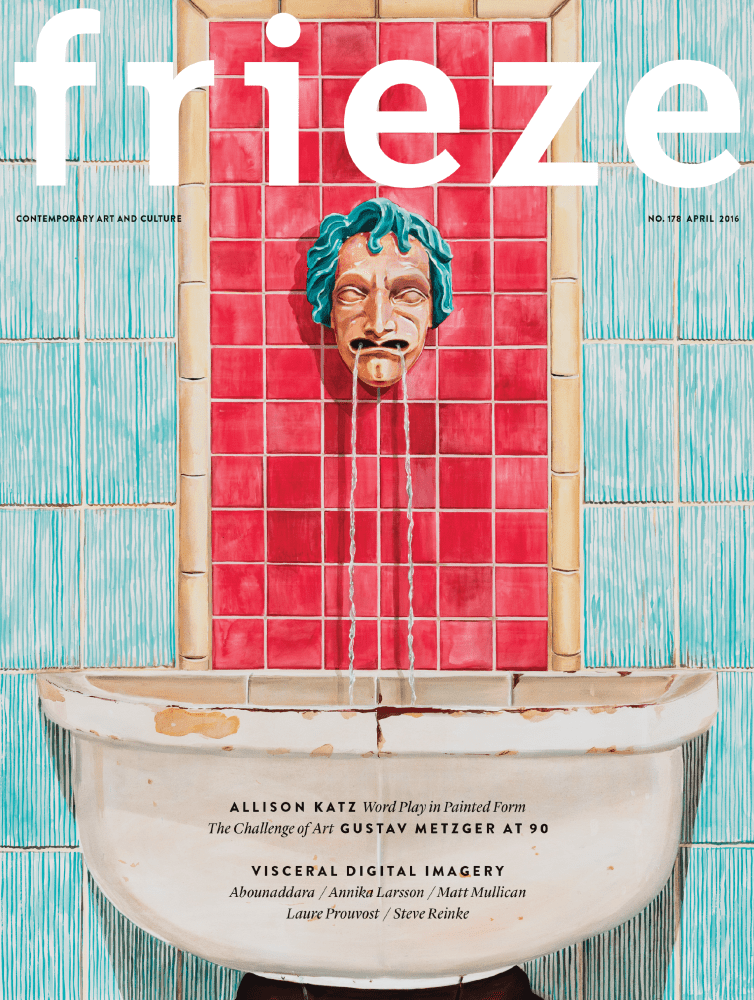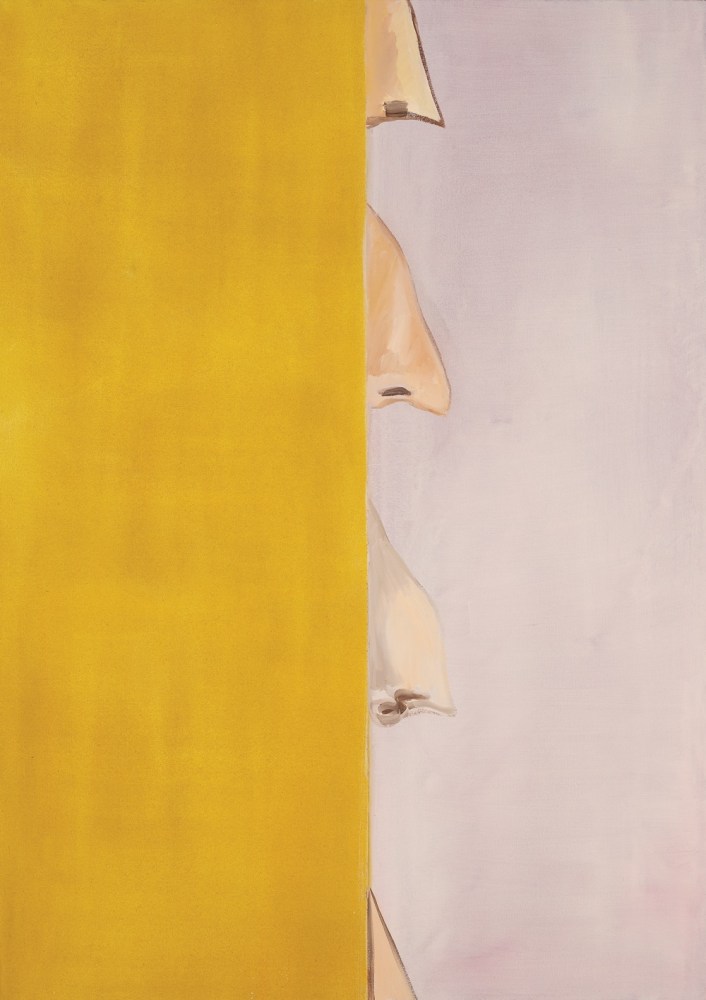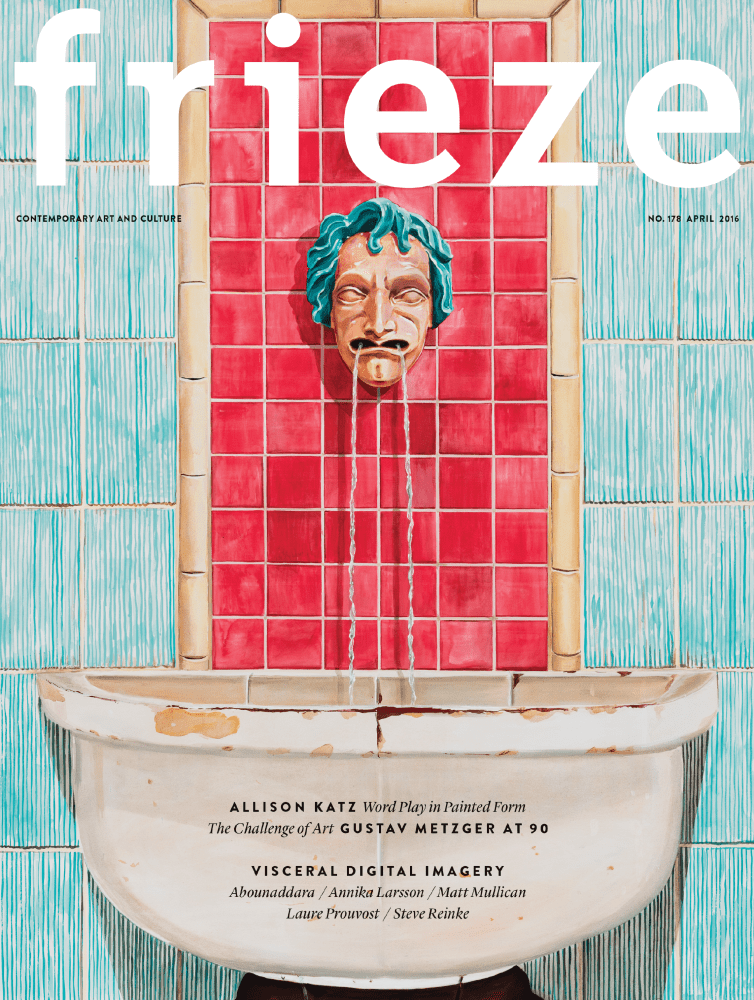
Allison Katz, Marienbad Fountain On, 2015
When Allison Katz begins a painting, she starts by taking notes: borrowed quotations and her own observations, which meet and begin to form a dialogue of sorts. Fomented by this accumulated note-gathering, each painting becomes a forum for an exchange of ideas, where inside meets outside. At times, this conceptual charge seems in danger of overwhelming the painting’s apparently simple imagery.
Katz was born in Montreal in 1980 and completed an MFA at New York’s Columbia University in 2008, where she was taught by a clutch of influential painters – including Charline von Heyl, Jutta Koether, Blake Rayne and Amy Sillman – before moving, two years ago, to London, where she now lives. When I visited her studio in an industrial unit in south London in autumn 2015, our conversation turned to the notion of painting, which she described to me as an ‘irritant’. She sees her work as a space in which to put something – to try and activate something, perhaps even to make a statement, but one that is constantly interrupted by all kinds of other things, which intrude whether you want them to or not. As we talked, a painting leaning beside the studio door kept catching my eye. It pictured the tiled interior of a shower, empty save for the amorphous shape of a sponge dangling from the shower head, and the leaves of a tropical plant (Shower’s Head (Frontal), 2013). Is it possible to paint a shower now without David Hockney springing to mind? Though the shower in Katz’s painting is unoccupied, it feels as if a figure has just left, and that figure belongs to a Hockney painting.

Allison Katz, Noses, 2014, oil on canvas
On each of Katz’s canvases, as well as between them, an extrapolated joust with intentionality is enacted – word play in painted form. Just as language can be made to flex into puns, rhymes and jokes, so Katz tests the flexibility of gesture. Can the painted image be dislocated from the artist’s intention and enact a kind of spontaneity? Does each non-representational brushstroke inevitably morph into figuration? At what point does a doodled line decide to become a nose? The motif of a nose in profile has become something of a signature for Katz, appearing in several paintings, as well as providing decorative coverage for a paravent and a fake architectural portico. Derived from the artist’s own profile, the nose is a metonymic self-portrait of sorts, thus hinting at the unavoidable, monolithic self that inhabits each painting, no matter how many external references or painterly tricks are brought in to try and trip it up or elude its domineering presence.
View full article at frieze.com

